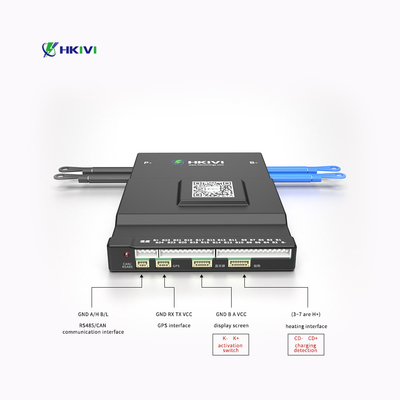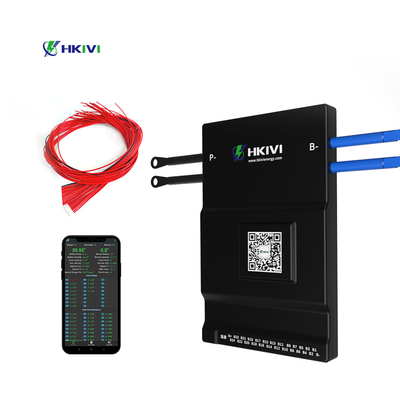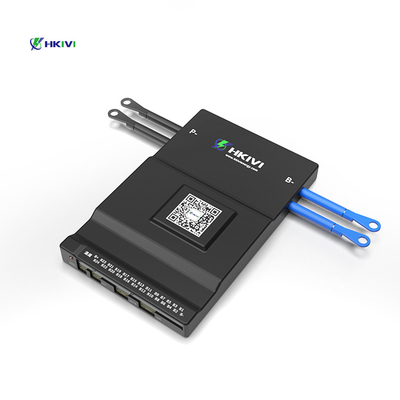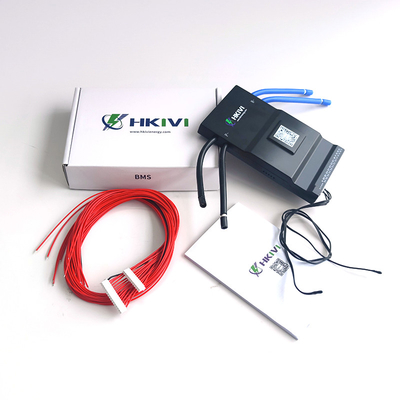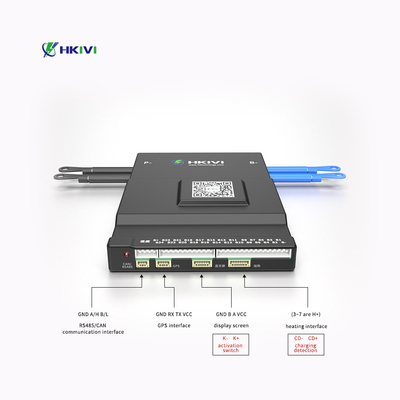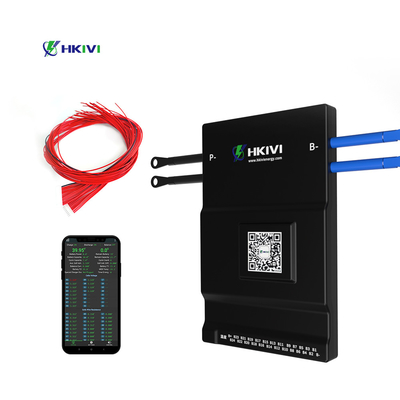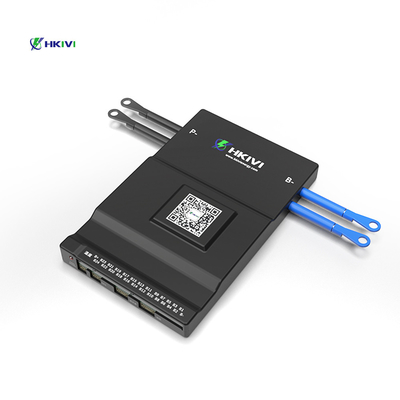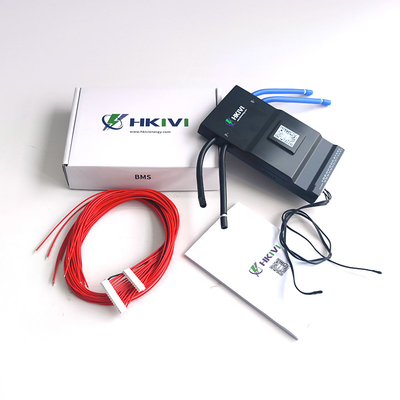-
 Ali Antonio Soto Vasquezexcelente atención
Ali Antonio Soto Vasquezexcelente atención
HKIVI 16s 48v Lifepo4 BMS For Scooters / Cars / Tricycles / energy storage
| Place of Origin | China |
|---|---|
| Brand Name | HKIVI |
| Model Number | B3A6724S15A |
| Minimum Order Quantity | Minimum order quantity: 20 sets |
| Price | Negotiable |
| Packaging Details | Single package size: 14.6X9.3X2.74 cm |
| Delivery Time | 7-14 work days |
| Payment Terms | L/C, D/A, D/P, T/T, Western Union, MoneyGram, PayPal |
| Supply Ability | 2000 sets/month |

Contact me for free samples and coupons.
WhatsApp:0086 18588475571
Wechat: 0086 18588475571
Skype: sales10@aixton.com
If you have any concern, we provide 24-hour online help.
x| Product Name | BMS Lifepo4 | Type | 4s Smart Bms 12v 250a BMS Lifepo4 16s 48v For Lithium Ion Battery Pack |
|---|---|---|---|
| Number Of Strings | 7~24S | Battery Type | Lifepo4/LTO/Li Ion Battery Pack |
| Discharge Current | 150A | Equilibrium Approach | Active 0.6A |
| Communication | RS485/CANbus/UART/BT | Surface Finishing | HASL |
| Application | Scooters,cars, Tricycles,energy Storage, Starting Power Supplies, Etc. | Board Size | 136mm*83mm*17.4mm |
| Highlight | lifepo4 16s 48v bms For Scooters,lifepo4 16s 48v bms For tricycles,16s 48v lifepo4 bms For Scooters |
||
4s Smart Bms 12v 250a BMS Lifepo4 16s 48v For Lithium Ion Battery Pack
HKIVI BMS lithium battery intelligent protection board is a management system tailored for large-capacity series lithium battery packs, with functions such as voltage acquisition,high current active equalization, overcharge, overdischarge, overcurrent and overtem-perature protection, coulomb counter Bluetooth communication, GPSremote and other functions .Applicable to lithium iron phosphate, ternary lithium and other battery types.Relying on the energy transfer active equalization technology with independent intellectual property rights, the protection board can achieve a maximum continuous equalization current of 2A. The high-current active equalization technology can ensure the consis-tency of the battery to the greatest extent, improve the mileage of the battery, and delay the aging of the battery.The protective board has a supporting mobile APP, which supports ANDROID andlOS operating systems. The APP can be connected to the protection board through the Bluetooth of the mobile phone to check the working status of the battery, modify various working parameters of the protection board, control the charging and discharging switch, and so on. The protection board is small in size, easy to operate, and full of functions, and can be widely used in battery packs for small sightseeing cars, scooters, shared cars, high-power energy storage, base station backup power, and solar power stations.
![]()
| Model |
BD6A20S10P |
BD6A24S10P | B1A20S15P | B1A24S15P | B1A24S15P | B2A24S20P |
|---|---|---|---|---|---|---|
|
Number of ternary strings |
7~20 |
7~24 | 7~20 | 7~24 | 7~24 | 7~24 |
|
Number of iron lithium strings |
8~20 |
8~24 | 8~24 | 8~24 | 8~24 | 8~24 |
|
Number of titanic acid strings |
14 |
14~20 | 14~20 | 14~24 | 14~24 | 14~24 |
|
Balance method |
0.6A |
1A | 2A | |||
| Continuous discharge current | 100A | 150A | 200A | |||
| Maximum discharge current | 100A | 300A | 350A | |||
| Overcurrent protection (adjustable) | 10-100A adjustable | 10-150A adjustable | 10-200A adjustable | |||
| Outlet mode | same port | |||||
| Single voltage range | 1.5-5V | |||||
| Voltage Acquisition Accuracy | +3mV | |||||
| Overcharge protection voltage | 1.5~4.5V adjustable | |||||
|
Overcharge release voltage |
1.5~4.5V adjustable |
|||||
| Overcurrent protection delay | 10~120S adjustable | |||||
| Over-discharge protection voltage | 1.5~4.5V adjustable | |||||
| Over-discharge recovery voltage | 1.5~4.5V adjustable | |||||
| Number of temperature detection | 3 | |||||
| Temperature Protection | Yes | |||||
| Short circuit protection | Yes | |||||
| Coulomb counter | Yes | |||||
| Bluetooth function | support Android, Apple, HarmonyOS | |||||
| Display interface | Yes | |||||
| GPS interface | Yes | |||||
| RS485 interface | Yes | |||||
|
CAN interface |
Optional |
|||||
![]()
Some key points of LiFePO4 battery in BMS design:
Features of LiFePO4 battery:
High safety, good thermal stability, not prone to thermal runaway
Long cycle life, up to 2000-5000 times
Good performance in low temperature environment
Relatively low energy density
Considerations for LiFePO4 battery BMS design:
Charging voltage control: The upper limit of charging voltage of LiFePO4 battery is generally 3.65V/cell
Discharge depth control: Excessive discharge will reduce battery life, and the discharge depth needs to be limited
Temperature monitoring and protection: LiFePO4 battery is sensitive to temperature changes and needs to be strictly monitored
Balance strategy optimization: LiFePO4 battery is more sensitive to capacity differences between batteries
Main functions of LiFePO4 battery BMS:
Accurately detect the voltage and temperature of each battery cell
Real-time monitoring of the total voltage, current and temperature of the battery pack
Implement charge and discharge control according to battery characteristics
Use active balancing technology to ensure the consistency of battery cell status
Fault diagnosis and alarm to protect the battery from overcharge and over discharge
LiFePO4 battery BMS Typical applications:
Electric vehicles and electric bicycles
Energy storage systems
Outdoor backup power and UPS
Power tools and electric equipment
In general, LiFePO4 batteries require more sophisticated BMS management to fully utilize their advantages due to their unique chemical properties. An excellent LiFePO4 battery BMS should achieve precise control of voltage, current, and temperature, and use active balancing technology to provide all-round safety protection and performance optimization for the battery system.
![]()
Key points of BMS design for LiFePO4 batteries in various application scenarios:
Electric vehicles:
The battery pack has a large capacity and a large number of single cells, which requires complex monitoring and balancing control
Focus on driving range, high power output and safety, requiring BMS to accurately control charging and discharging
Real-time monitoring of battery temperature is required to prevent safety hazards caused by overheating
Energy storage system:
Large-capacity battery packs have high requirements for cost and reliability
BMS is required to provide accurate battery status monitoring and long-term management functions
Active balancing technology can improve battery utilization and system efficiency
Mobile power/UPS:
Portability and reliability are key considerations
BMS must achieve accurate charging and discharging control of batteries to prevent overcharging and over-discharging
Battery status detection and fault warning functions are required
Electric tools/equipment:
Cost and volume restrictions are large
BMS design should be as simple and efficient as possible, and passive balancing is preferred
Basic battery protection and monitoring functions are still required
Consumer electronics:
Cost and volume restrictions are more stringent
BMS design requires high integration and low power consumption
Passive balancing is generally used, but some high-end products also use active balancing
LiFePO4 battery BMS The design needs to balance the characteristics of different application scenarios to achieve the best adaptation in terms of cost, volume, function, performance, etc. Whether it is active or passive balancing, BMS should ensure the safe and reliable operation of the battery pack and maximize the advantages of LiFePO4 batteries.
![]()
There are two ways to implement the balancing function: active balancing and passive balancing.
BMS Active and passive balance are two methods used in battery management systems (BMS) to equalize the state of charge (SOC) or voltage levels of individual cells within a battery pack. The goal is to ensure that each cell operates within a desired range and maximize the overall performance and lifespan of the battery pack.
![]()




